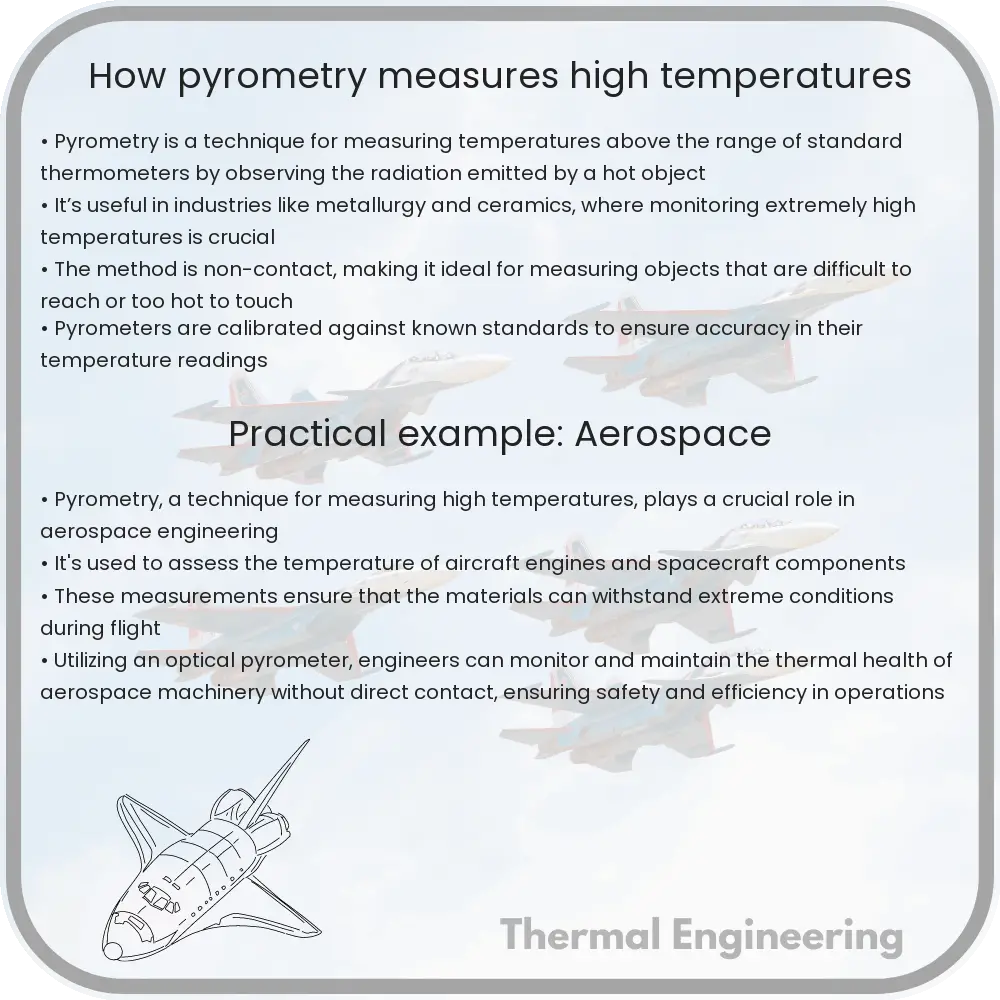Learn about pyrometry, the engineering science of high-temperature measurement, its principles, types of pyrometers, and their industrial applications.

Understanding Pyrometry: The Science of Measuring High Temperatures
Pyrometry is a specialized field in engineering and science that focuses on the measurement of high temperatures, particularly in industrial processes and research applications where precise temperature control is crucial. This article explores how pyrometry works, the different types of pyrometers used, and their applications in various industries.
What is Pyrometry?
Derived from the Greek words ‘pyro’ meaning fire and ‘metry’ meaning measure, pyrometry deals with the methods and devices used to measure temperatures above those typically measurable with conventional thermometers. This technique is essential in environments where materials are processed at high temperatures, such as in metallurgy, ceramics, and glass manufacturing.
Types of Pyrometers
There are several types of pyrometers, each suited to different temperature ranges and applications. The most commonly used include:
- Optical Pyrometer: Measures the visible light emitted by a hot object to determine its temperature. The principle is based on the Planck’s law of black body radiation, where the temperature is deduced from the color of the light emitted.
- Infrared Pyrometer: Works on the principle that all objects emit infrared radiation at temperatures above absolute zero (-273.15°C). These devices measure the intensity of infrared radiation to calculate the temperature of the object.
- Radiation Pyrometer: Similar to infrared pyrometers, radiation pyrometers focus on the total radiation emitted by an object to determine its temperature. This type is useful for measuring extremely high temperatures.
How Pyrometers Measure High Temperatures
Pyrometers measure temperature without making physical contact with the object being measured. This is a significant advantage in situations where contact with a hot object is impractical or risky. The two main principles used in pyrometry are:
- Displacement Law: As the temperature of an object increases, the peak wavelength of the emitted radiation shifts to shorter wavelengths. Optical pyrometers use this principle to measure high temperatures by comparing the color of the light emitted from the object to that of a calibrated light source.
- Stefan-Boltzmann Law: This law states that the total energy radiated per unit surface area of a black body is proportional to the fourth power of the black body’s temperature. Infrared and radiation pyrometers often use this principle to determine the temperature by measuring the intensity of the infrared or total radiance.
Applications of Pyrometry
Pyrometry is vital in industries where precise temperature measurements are critical:
- Steel Industry: Ensuring the correct melting temperatures for different grades of steel.
- Glass Production: Controlling the temperature of molten glass to produce high-quality products.
- Semiconductor Manufacturing: Maintaining specific temperatures during the production of semiconductors is crucial for the functionality and quality of electronic devices.
- Power Generation: Monitoring the temperature of turbines and other critical equipment in power plants to optimize their efficiency and safety.
Pyrometry plays a crucial role in advancing technology and industrial production by providing a reliable method to measure high temperatures accurately, thereby ensuring quality, safety, and efficiency in thermal processes.